The Oslo Opera House
Operahuset is a Norwegian name of the Opera and Ballet Theatre.
It is located in the Bjørvika – neighborhood of central Oslo, at the head of the Oslofjord.
Norwegian Opera and Ballet Theatre
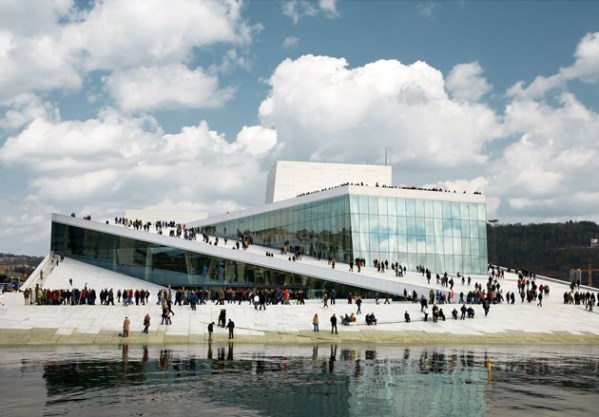
Norwegian National Opera and Ballet Theatre
The main distinctive feature of this building is a sloping roof. Everyone can walk on it to the highest point of this building to observe a panoramic view of Oslo. The surface covered with white Italian marble and has a different texture. At places where people walk more often marble gained roughness. And other areas are staying smooth. Sunlight plays on these differences in white marble texture, reflecting from the glass surface adding a fascinating charm to the Opera House. Skateboarders who loved this building add final stroke to the picture of modern Norway.
Operahuset’s structure reminds of a giant iceberg that emerged out of the water. Very Scandinavian, isn’t it? There is a tower in the center of the building. Glazed walls of the tower open the view to the bay. Also the visitors who walk outside can see what’s happining inside in the hall. Ideal solution of making connection between external and internal spaces. The walls of the tower are plated with white aluminum with a convex-concave pattern similar to ancient weaving patterns.
Norwegian National Opera and Ballet Theatre is the largest building in Norway since 1300s when Nidarosdomen (Lutheran Cathedral) was established.
In 2008 it won the award of the International festival in Barcelona. Jury found Oslo Opera House as not only a great architectural creation but also as a popular place for tourists and visitors. In 2009 theatre got Mies van der Rohe’s Prize from the European Union as the best building.
Operahuset was built in 2007 by Norwegian architectural company Snøhett. This company won international competition where participated more than 200 project proposals. Ten years earlier Snøhett built the famous New Alexandria Library.
On the south side of the building there are many sun batteries. It is the largest setting of sun batteries in Norway. They give part of the necessary electricity to the theatre.
Inside there is a U-shaped concert hall decorated with Baltic oak panels. There are 1364 armchairs with screens on the back, where you can see subtitles in 8 languages. Norwegian north-west coast boat masters work on the thread on the balconies. The largest chandelier dangles from the ceiling; it has 5800 hand-made crystal elements. This chandelier is 7 meters long, weighs 8 tones and was made by Norwegian Hadeland Glassverk Studio that specializes in glasswork.
The scene of the Oslo Opera House is 16 meters wide and 40 meters deep. It has become one of the most technically advanced in the world. The scene is composed with 16 independent sites; each of which can be raised, tilted, rotated. In addition there is a 15-meter turning circle, two side scenes, backstage and the lower level of the 9 meters depth, designed to prepare decorations that will be raised on stage. Scene control device consists of more than two hundred silent electric and hydraulic actuators. Some parts of the stage equipment are at 16 meters below the water level in the bay. Though technical premises are located behind the stage there is a corridor which is wide enough to fit trucks that can go through it and unload directly to the stage.
The construction budget was up to 300 million Norwegian kroner that is almost 1/15 part of the Norway’s annual budget. The grand opening of the new theater was on 12th of April, 2008 with the participation of Norway King Harald V, Queen Margrethe II, and the President of Finland Tarja Halonen.
Scally Brandson
Latest posts by Scally Brandson (see all)
- How to Expand Space in Small Room with Wallpaper - October 8, 2013
- How to Choose Wallpaper. Part 2. Choosing Wallpaper - October 8, 2013
- How to Choose Wallpaper. Part 1. Types of Wallpaper - October 8, 2013
Leave a Reply

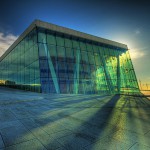
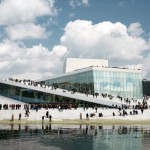
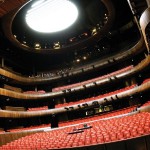
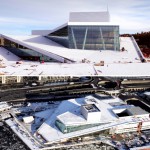
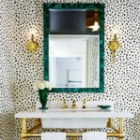

 Color
Color Design Style
Design Style Small Space
Small Space Useful Tips
Useful Tips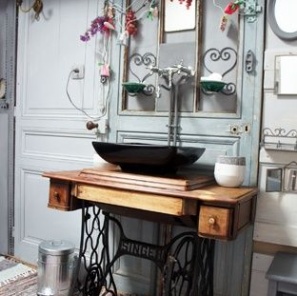


September 10th, 2013 at 10:07 am
Hop on a skateboard and slide right into the water! Honestly, that was the first thing that came into my mind when I saw the Oslo opera house. Skateboarders in the city must have gone crazy with different ideas when the building was finished. Those sloping surfaces just make it look really inviting to the public and accessible. I love how the whole concept tries to erase the borderline between land and sea.